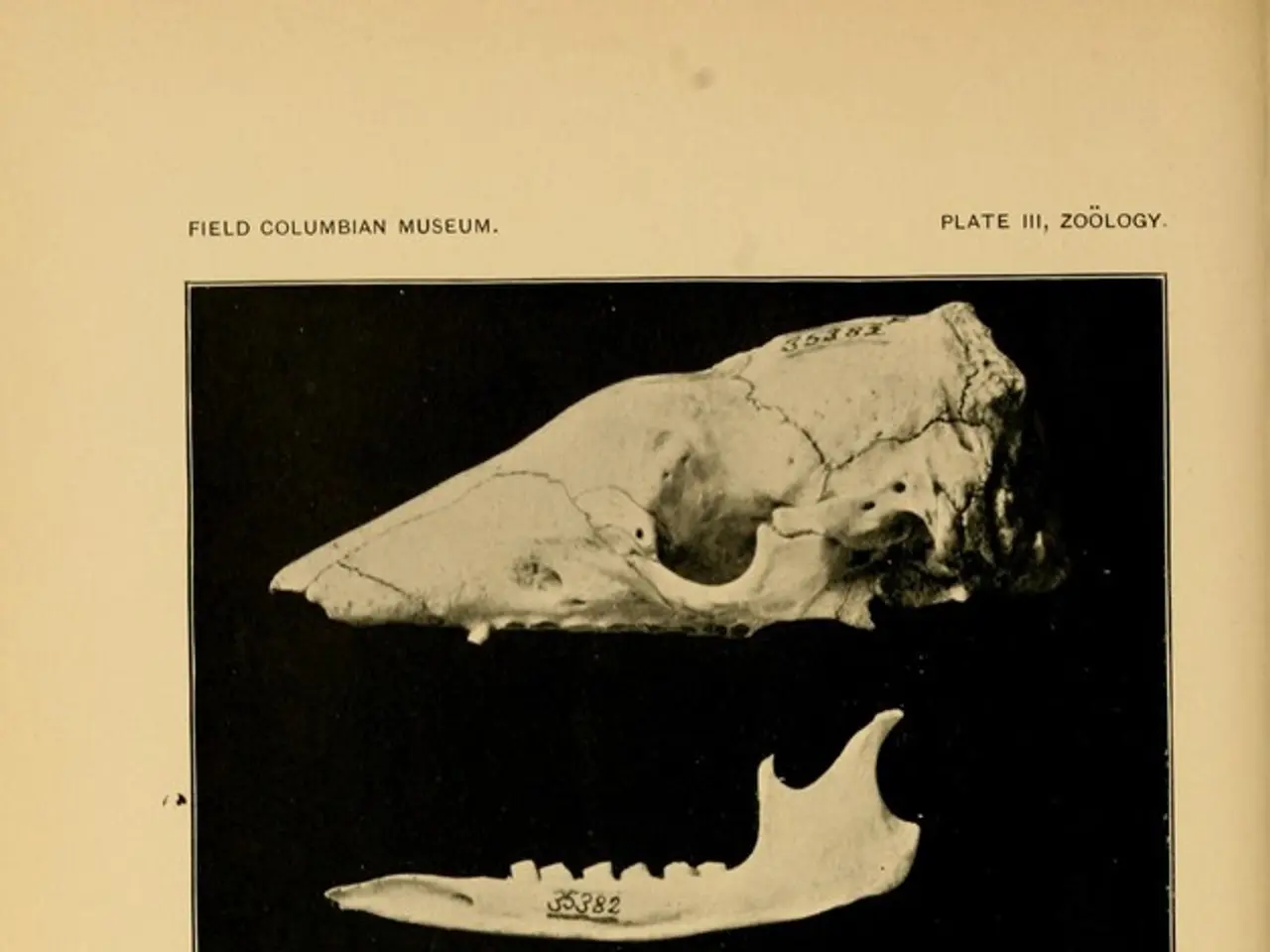Human Regeneration Progress: Potential Advancements in Limb and Organ Regrowth for Humans
In the realm of regenerative medicine, the hypoxia-inducible factor (HIF) signaling pathway is a subject of intense research. This pathway plays a crucial role in processes such as angiogenesis and re-epithelialization during wound healing, making it a potential key to improving tissue regeneration in humans.
The axolotl, a species extensively studied for its remarkable tissue regeneration abilities, offers insights into the role of HIF in organ regeneration. Research has shown that the Hippo signaling pathway, which is also essential in determining organ size, is involved in the regeneration of organs in axolotls.
Angiogenesis, a form of regeneration in which existing blood vessels grow new blood vessels into affected areas, is influenced by the HIF pathway. This process is crucial for the growth of the blastema, a mass of undifferentiated cells that effectively resets tissues to an embryonic state of development. In the case of axolotls, the formation of the blastema is led by signals from macrophages.
Among mammals, the ability to create a blastema of undifferentiated cells after an amputation is limited, and some species, including humans, do not possess this ability. However, recent studies have shed light on the potential of modulating the HIF pathway to enhance regenerative capabilities.
For instance, forced upregulation of the HIF-1α subunit of the HIF signaling pathway can induce full regeneration of certain types of wounds to the skin in mice. This suggests that enhancing HIF could shift healing from scarring to true regeneration.
Moreover, research has revealed that the HIF pathway is involved in metabolic reprogramming during regeneration. Downregulation of SMAD3 activates HIF-1α, inducing aerobic glycolysis, which supplies energy and biosynthetic substrates necessary for cell reprogramming in regenerative processes.
The VHL/HIF-1α/Tie2/AMPK/autophagy axis also regulates angiogenesis via macrophage functions critical for bone growth plate repair. Reducing the VHL protein, which normally suppresses HIF-1α, enhances HIF-1α and improves vascularization, supporting regeneration of avascular tissues vulnerable to injury.
Stem cell maintenance and regenerative capacity are also influenced by long-term hypoxia and HIF-1α signaling. Understanding pathways interacting with HIF-1α, like Wnt and TGFβ1, is important for developing human tissue regeneration models and therapies.
In contexts like graft-versus-host disease, HIF-1α supports intestinal epithelial cell regeneration and modulates immune cell activity, indicating its broader role in tissue repair and immune environment regulation.
These findings collectively suggest that targeting HIF signaling, especially through controlled activation of HIF-1α, may provide therapeutic strategies to enhance regenerative healing, stimulate stem cell function, promote angiogenesis, and reduce fibrosis in humans. Clinical translation will require further in vitro and in vivo studies to understand precise molecular mechanisms, optimize delivery, and confirm safety and efficacy.
While the human body has limited regenerative abilities compared to some other animals, understanding and harnessing the body’s natural hypoxia response mechanisms through the HIF pathway could pave the way for significant advancements in regenerative medicine.
Science has revealed that the HIF signaling pathway, crucial in angiogenesis and re-epithelialization, is a potential key for improving health-and-wellness outcomes in medical-conditions related to tissue regeneration. Recent studies have shown that enhancing this pathway, such as through forced upregulation of the HIF-1α subunit, may shift healing from scarring to true regeneration, offering promising therapies-and-treatments for various medical conditions.




